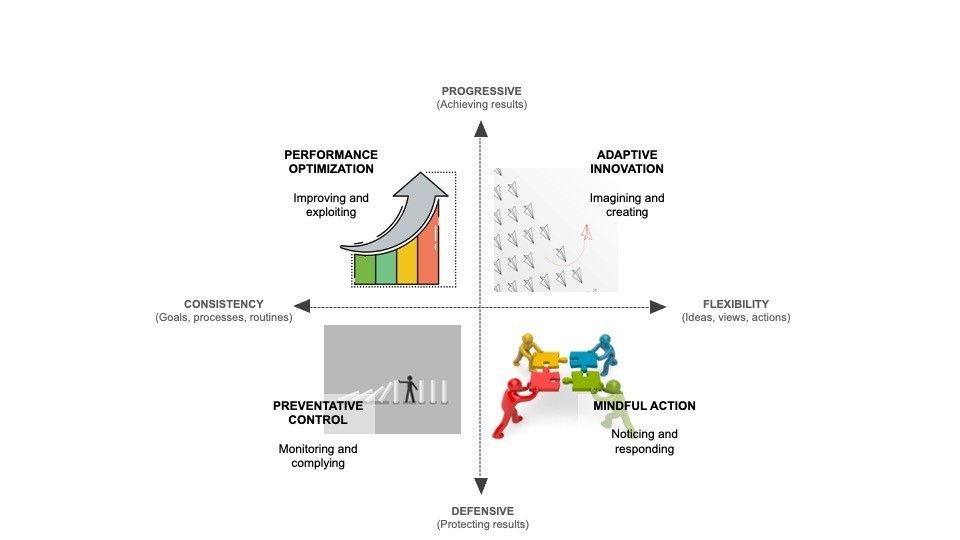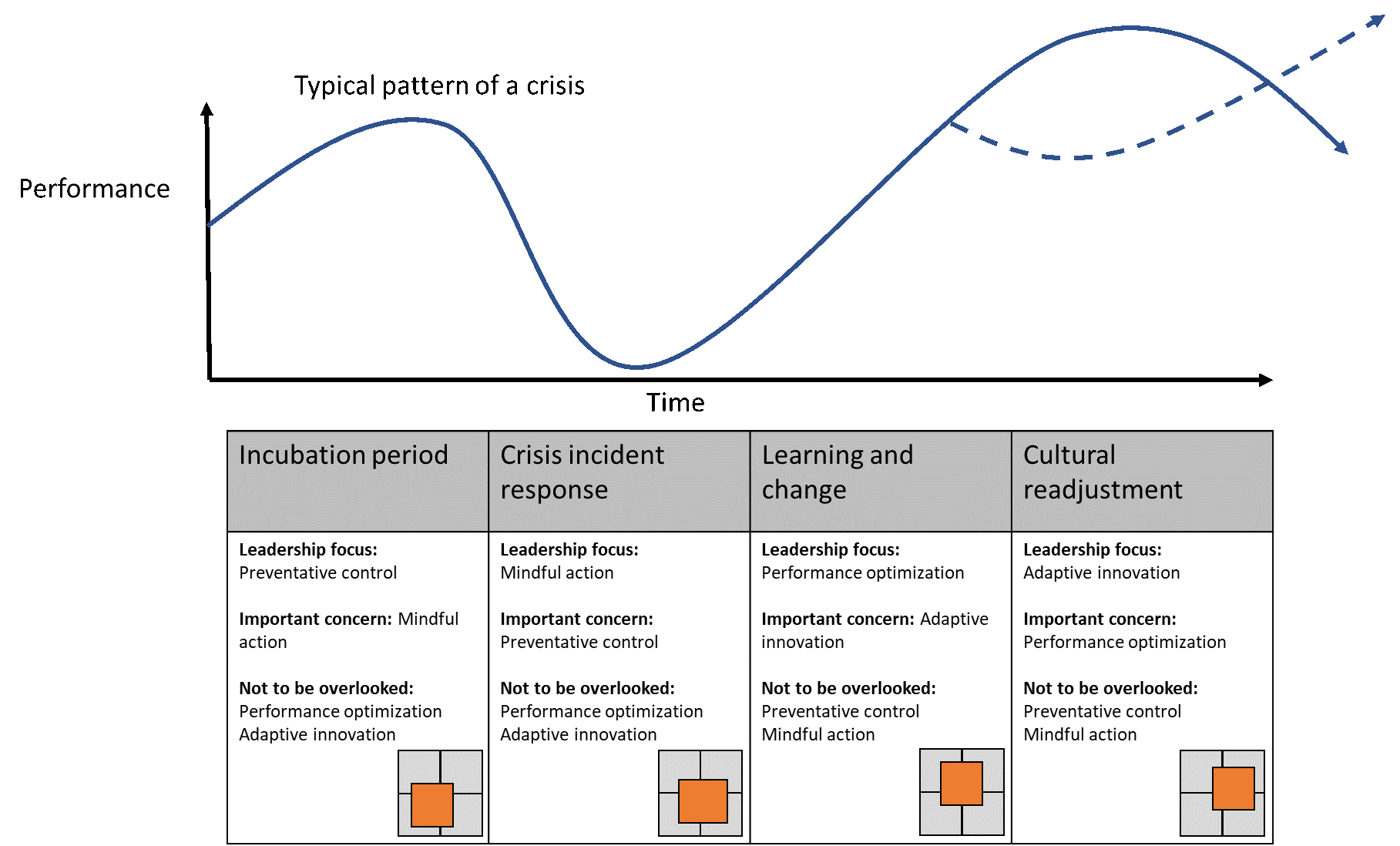As I write this article, I am reflecting on the fact that just last week, I was in a meeting discussing a global conference planned for June. The decisions and actions that many of us took last week looked foolish by Monday morning. This week I have been focusing on keeping my family and team safe, cancelling important events, reaching out to clients to move business forward, and exploring new ways to stay connected and productive. I know from talking to many of you that you are doing the same.
I have been working on risk and resilience for almost 20 years. I have been involved in helping organizations to respond to extreme events across every sector, including significant leaks, fires, explosions, never events, attacks, and natural disasters. Nothing compares with this. COVID-19 is an unprecedented crisis that has been met with an unparalleled response. Health agencies, governments, and businesses around the world are stepping up efforts to tackle the novel coronavirus. The Director General of the World Health said, 'a virus is more powerful in creating political, social and economic upheaval than any terrorist attack. It's the worst enemy you can imagine'. Companies are scrambling to mobilize responses. Many of you have asked me how thinking on organizational resilience can help to lead and to work in this unprecedented global disruption.
In this article, I draw on some of my previous work to offer some thoughts about building a strategic approach to building and strengthening organizational resilience in disruptive times. If you have read any of my articles before, you will know that I define organizational resilience as an ability to anticipate, prepare for, respond and adapt to and learn from challenges and disruptions in order to survive and prosper. Much of my previous work has been on the factors that lead organizations to sleepwalk into failure. Many disasters are slow-moving, generated by the aggregation of small failures that emerge out of normal conditions that conceal their nature.
COVID-19 is a high-velocity crisis
The COVID-19 situation has moved so fast that many people, organizations, and governments blinked and failed to see it coming. The speed of the response needs to match the speed of the situation. Unilateral responses taken by governments and organizations (e.g., restricting travel, working from home, banning mass gatherings, canceling events and closing schools) that looked like costly over-reactions just a few days or weeks ago, are now being interpreted as 'too little too late.' In a crisis, solutions can't be objectively judged as right or wrong, just better or worse. As leaders, we are making complex decisions daily to keep our workforces and communities safe, while also moving our businesses forward.
Lead with empathy
In my last article, I said no matter what the context, leading resilience is about putting yourself in the shoes of all stakeholders to understand how disruption could cause harm. It is about reducing the number of people affected by disruption (e.g., to the provision of an essential service) with a specific focus on protecting people in vulnerable situations. It is about investing in and designing resilience to ensure the secure, safe, and sustainable functioning of critical systems and services for all - creating a bedrock for wellbeing and prosperity. I think that this still holds and should be at the heart of any leaders’ response to the COVID-19 crisis.
Build a strategic response
Our research (here) combined the best available scientific evidence on Organizational Resilience and practices of world-leading firms. We found that effective Organizational Resilience strategies require the management of two core dimensions:

Responding to COVID-19 will require leaders to be both defensive AND progressive and also consistent AND flexible. These two dimensions form an integral part of a framework, which we have termed the Strategic Tensions Quadrants Model (Figure 1), which highlights four common strategies for achieving Organizational Resilience.

Figure 1. The Strategic Tensions Quadrants Model
Ensure preventative control
We are all currently enacting preventative control measures in response to COVID-19, ranging from hand hygiene, testing and isolating suspected cases, quarantining households with suspected cases, preventing travel, socially distancing those most vulnerable, through to total curfews/lockdowns of cities and countries. Much will need to be done to suppress the Covid-19 outbreak, but what remains to be seen is how long dramatic suppression measures can be kept up.
Most organizations will have already implemented their crisis management and business continuity plans in response to the current crisis. However, “no plan survives first contact with the enemy," particularly an enemy like COVID-19. It is essential to assemble a small trusted teams and give them enough leeway to make rapid tactical decisions to plug gaps in the plan. This group has three primary functions (i) Implementing preventative controls that maintain the core functions of the organization (ii) Overtly managing communications when each day brings crucial new information to light (iii) Provide precise operational guidelines and procedures for employees, such as instructions for limiting exposure and emergency plans for abnormal situations. Centralized teams during a crisis can appear to be bureaucratic and impersonal. Therefore, be sure to communicate policies promptly, clearly, and with empathy. Also, remember that now is the best time to review your crisis response plans. Thanks to Mark Perrett for reminding us of this opportunity for real time learning. Standard after action review questions would work well:
- What was supposed to happen? What did happen? Why was there a difference?
- What worked? What didn't work? Why?
- What would you do differently next time?
Although we don't want to acknowledge it at the moment, we all know that there will be another event in the future and the learning that we capture now will make a difference.
Authorize mindful action
In a crisis, it is natural for leaders to want to control everything, especially when all around them governments are imposing draconian restrictions to suppress the virus. However, too much centralization and control is detrimental to organizational resilience in the medium term. The COVID-19 crisis is interconnected and complex, and business leaders need to harness the creativity of their people to grapple with this unprecedented challenge in a human-centric manner. Adapting to unpredictable challenges, with distinct dynamics and involving multiple stakeholders, requires decentralized initiative-taking. Rather than layoffs, resilient enterprises actively reallocate people to new and valuable activities, such as redeploying university lecturing staff from face-to-face lectures to become online influencers who leveraged digital tools to engage customers and clients virtually and drive online sales.
In times of uncertainty, you will always be able to find certain individuals who make it their mission to support others around them. There are already many heartwarming examples of volunteers helping vulnerable in self-isolation, supermarkets that have introduced dedicated shopping hours for elderly, a postcard scheme that allows vulnerable members of society to request that others carry out certain errands for them, an online art competition to occupy children in isolation, and a nightclub that has been transformed into a food distribution center. In a crisis, your people are your greatest assest and they will engage in mindful action for the benefit of your organization if they are authorized to do so.
We are seeing an unprecedented number of remote users on home and public internet services accessing their company’s resources. This week, I’ve already had meetings on zoom, skype, skype for business, WebEx, google hangouts, and I've set up MS Teams and Miro all in 24 hours! I am also using social media platforms, such as WhatsApp, to coordinate teams and LinkedIn, to reach out to clients and partners. Communication is crucial to mindful action and wellbeing. Leaders need to beware of the rules or infrastructure that limit communication. Companies will need to weigh up measures to reduce additional information security risks with the need for spontaneous collaboration, effective communication, channels for feedback, and the basic human need for conversation and support – particularly during an extended period of isolation.
Drive performance optimization
A resilient organization is one that not merely survives over the long term, but flourishes. Shifting mindsets from defensive to progressive might feel like a stretch at the moment. However, remember that some companies are currently thriving in this crisis, particularly remote meeting services, social media, hygiene products, health insurance, and other product groups. Also remember that the crisis will end and organizations and economies will eventually recover. Leaders need to be ready to leverage the opportunities that this will bring. The COVID-19 crisis will stimulate people to find faster, better, and potentially cheaper ways of working – as long as leaders sanction it. Leaders can foster the process of continuous improvement by asking their teams to refine and extend existing competencies, and use technologies to serve present customers and markets more efficiently and effectively. Organizations are already reshaping their business to leverage opportunities. For example, in China, Kuaishou, and several other video platforms partnered with the Ministry of Education to offer online education services to help offset school and university closures.
The crisis will make us all rethink how we do our work, and it will lead to long term improvements. The crisis will inevitably lead to changes work practices. This week I have delivered all my teaching, speaking, consulting, and coaching online. The changes that I have seen people around me make are already are genuinely transformational. Changes that may have taken months, if not years, are being achieved in days. The crisis will also provide opportunities for learning and development, and providers will be offering novel customized online training programs that allow employees to develop further in their area of expertise. It is up to organizations to seize these learning opportunities to develop their people and and grow their businesses.
Enable adaptive innovation
“Necessity is the mother of invention.” While leaders need to drive improvement within the current paradigm, they also need to enable creative ‘blue skies’ or ‘out of the box’ thinking. Resilience also requires innovation and creating new products, services, or markets. With this strategy, forward-thinking companies can themselves embody the disruption in their environment. COVID-19 will force some companies to rethink their mission fundamentally. The COVID-19 crisis will likely lead to some fundamental shifts across different sectors, and obvious candidates include a move from offline to online education, transformation in health care delivery, and the widespread adoption of parametric insurance. Companies will have the opportunity to innovate around new needs rapidly. Using tools such as design thinking will enable companies to understand user needs better as they emerge from the crisis, challenge assumptions, and redefine problems in an attempt to identify alternative strategies and solutions that might not be apparent at the moment.
To let that creativity flourish in your organization requires trust and psychological safety. Of course, COVID-19 has disrupted our understanding of a safe and secure working environment, and the impending financial crisis will exacerbate this. More, now than ever, leaders need to stop viewing their people as a means to an end to achieve financial outcomes or other measures of efficiency. Leaders also need to contain the anxiety of their teams – that is- they need to work doubly hard to reduce the threats people feel inside the organization, which frees people up to focus more time and energy to protect the organization from negative consequences of the COVID-19 crisis.
The typical pattern of a crisis
There is no single recipe, but leaders will need to find a balance between preventative control, mindful action, performance optimization and adaptive innovation that is appropriate to their mission and sector (see figure 2).

Figure 2: Balance and fit across the four resilient strategies
Organizations often become preoccupied with preventative control when the organization feels the threat of crisis (Figure 2). They tend to control expenditure and resources, layoff staff and focus on the one thing they do well (e.g. their core product or service). This is known as a threat-rigidity effect (Staw, Sanderlands and Dutton, 1981). By implication, the range of options open to the organization then narrows and it becomes progressively more difficult to reverse decisions, and the organization can become ‘path dependent’ getting locked, and it loses its capability to adopt better alternatives (Sydow, Schreyogg and Koch, 2009). Keeping adaptive innovation on the agenda, will enable the organization to break the mould and put the organization onto a new path (see Figure 3).
Research suggests that many extreme events proceed through broadly comparable phases (for example Turner 1976): Incubation period, Crisis incident response, Learning and change, and Cultural readjustment. This is an ‘ideal type’ event sequence. These are ‘not “phases” in the sense of a predictable sequential process but, simply, a way of structuring the description of events (Figure 3). Not all crises unfold at the same pace and, unsurprisingly, sectors and organizations recover from crises at different speeds.

Figure 3: Leadership focus and the four resilient strategies over time
A key lesson that we can learn from resilient organisations, is that in every phase, leaders’ pay attention to all four core resilience strategies, but naturally their focus will vary according to where their organization is on the crisis curve. Leaders need to continually shift their focus and manage the tensions between these four approaches if organizations are to be truly resilient.
We are firmly in the grip of the Coronavirus crisis and have all retrenched into defensive mode, but ‘waiting out the storm’ is not an option in the medium term. Instead, leaders must face the paradox of embracing risk and innovation if they are to succeed. Doing so requires them to prepare their businesses to react to opportunities as well as threats, adapting to not only survive but also prosper.
About David Denyer
David Denyer is a highly cited author, engaging keynote speaker, and an inspiring educator. He is a Professor of Leadership and Organizational Change, as well as a Commercial Director at Cranfield School of Management. He runs the Organizational Resilience and Change Leadership Group. David is a trusted advisor to the leaders of some of the world's most renowned companies and government organizations. He helps them to understand issues, identifies their specific needs, and then works with them to produce solutions that bring immediate improvement to their business. David also runs the Leadership in Disruptive Times: a Strategic Approach to Building and Strengthening Organizational Resilience at Cranfield, which is consistently rated as one of the world's top providers of executive development



